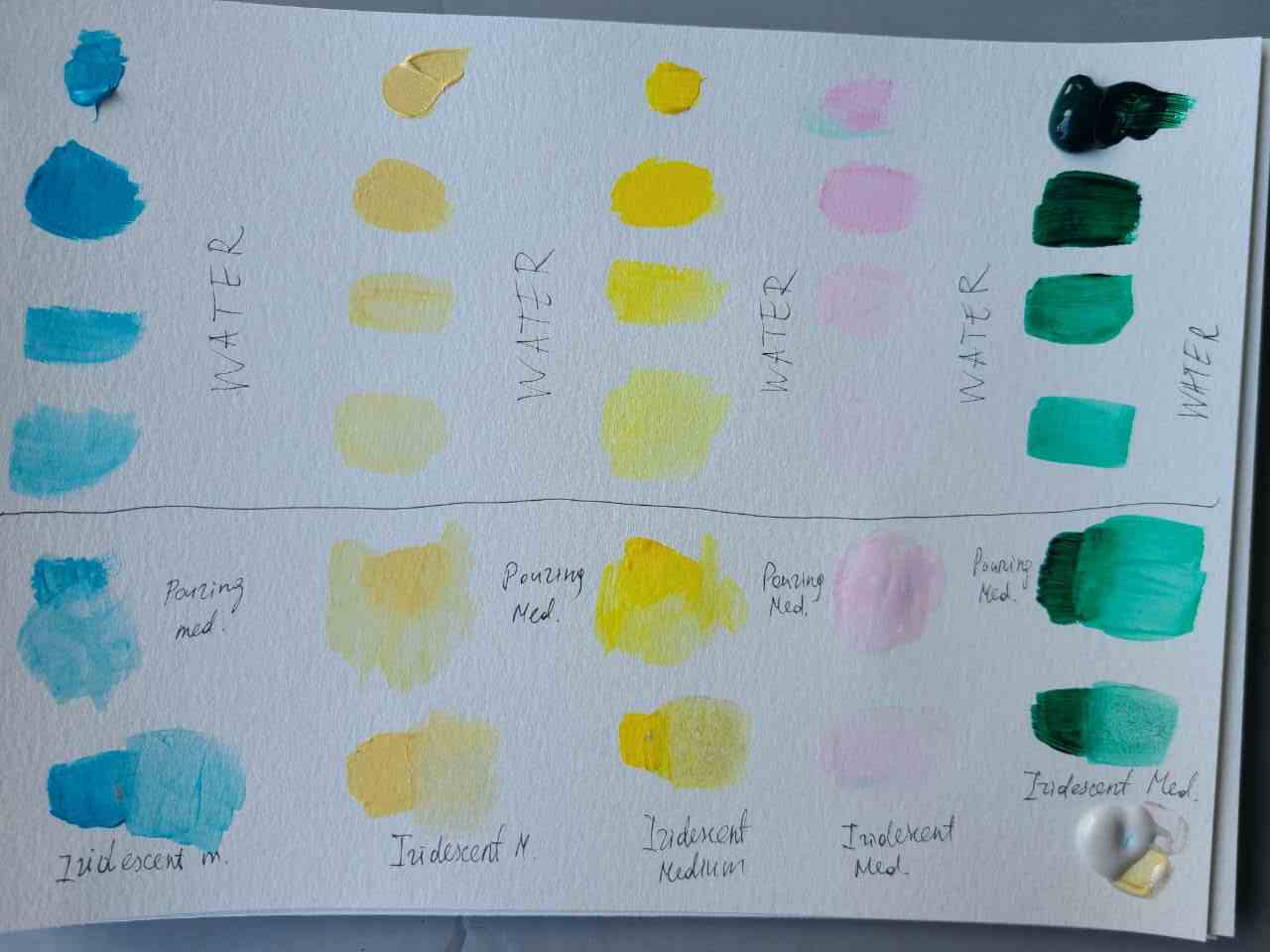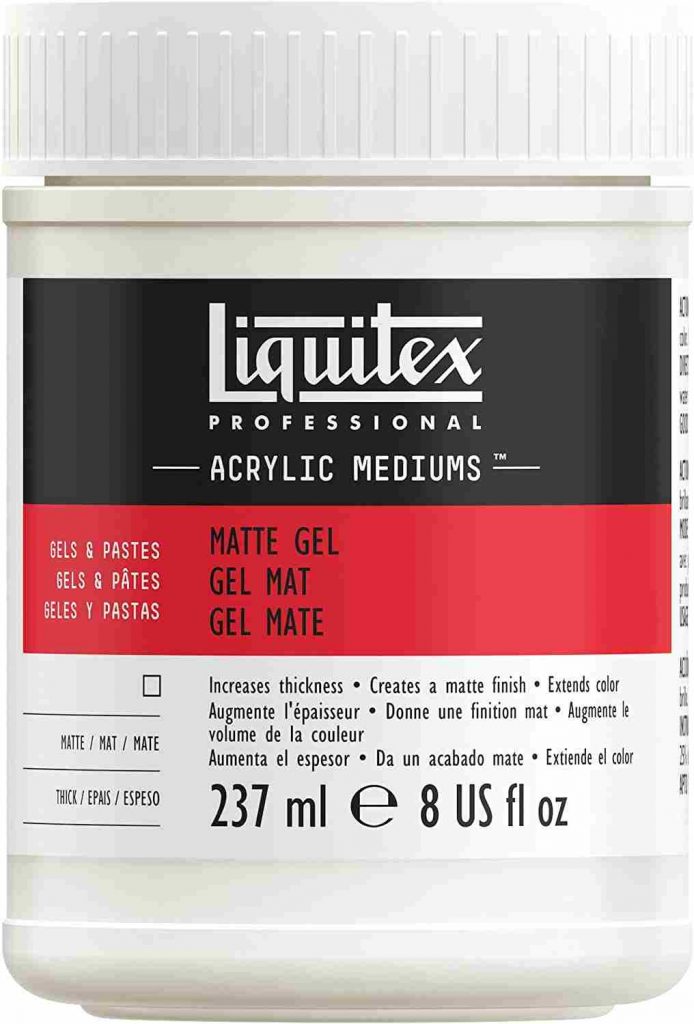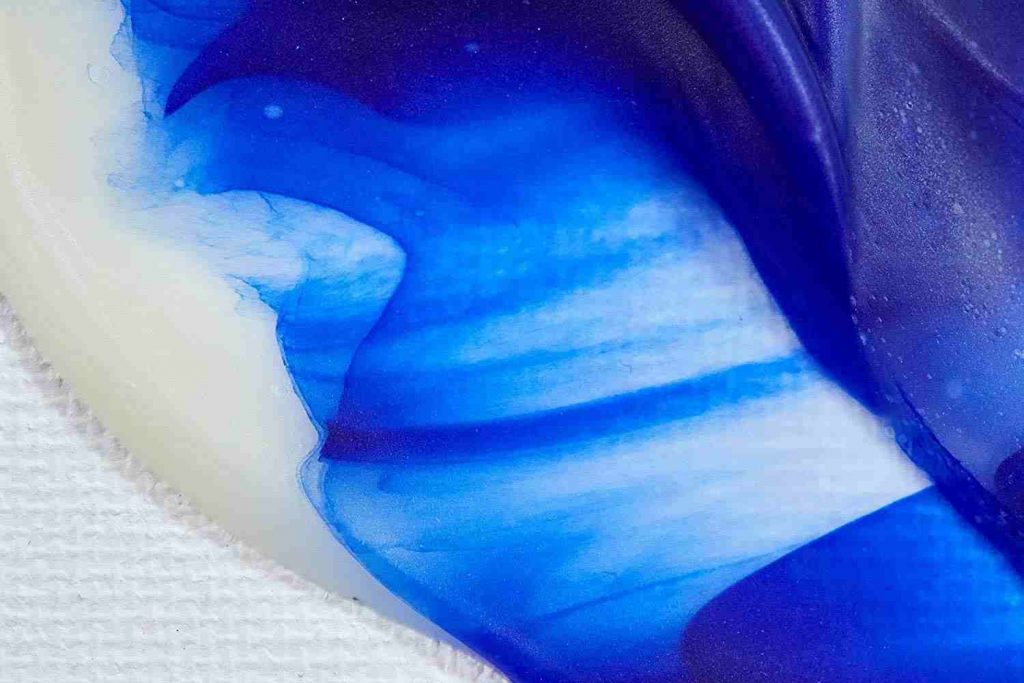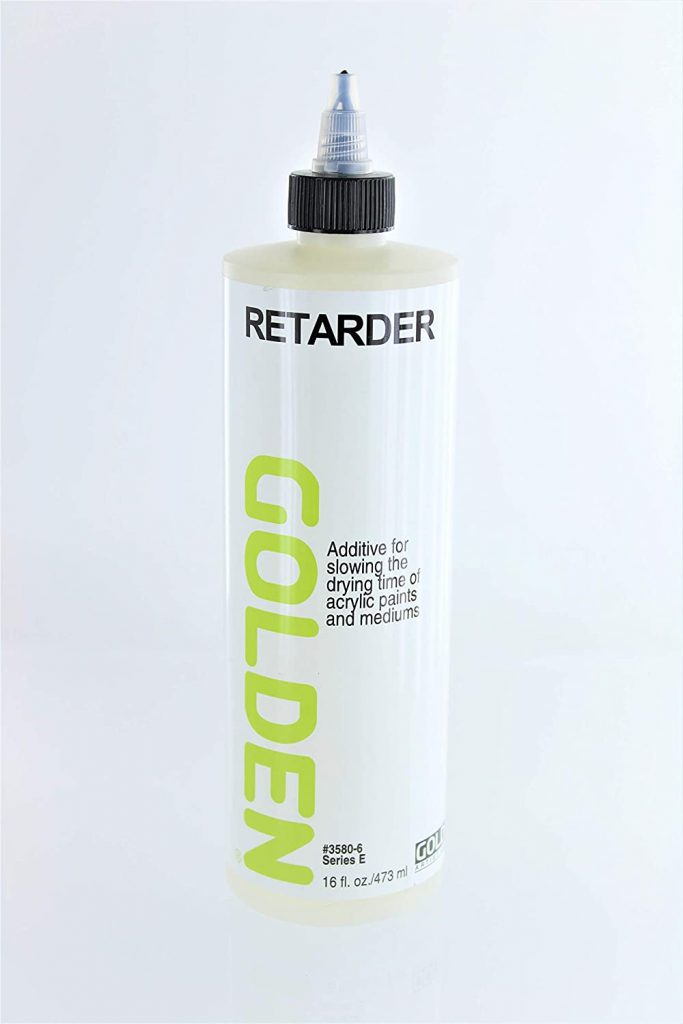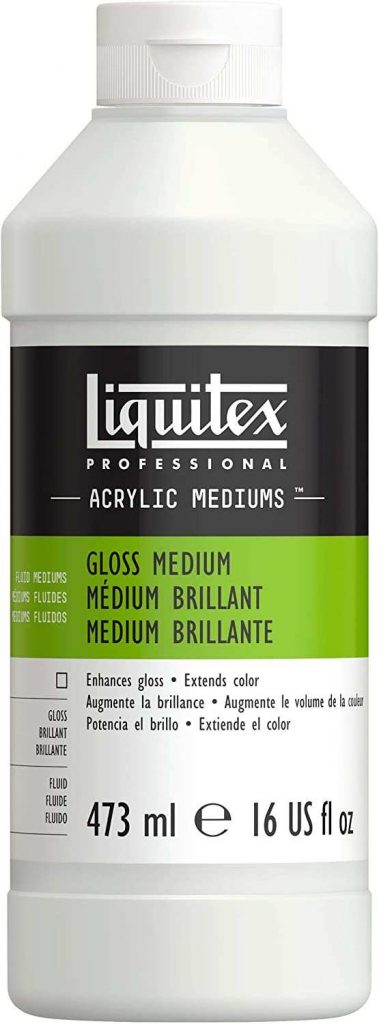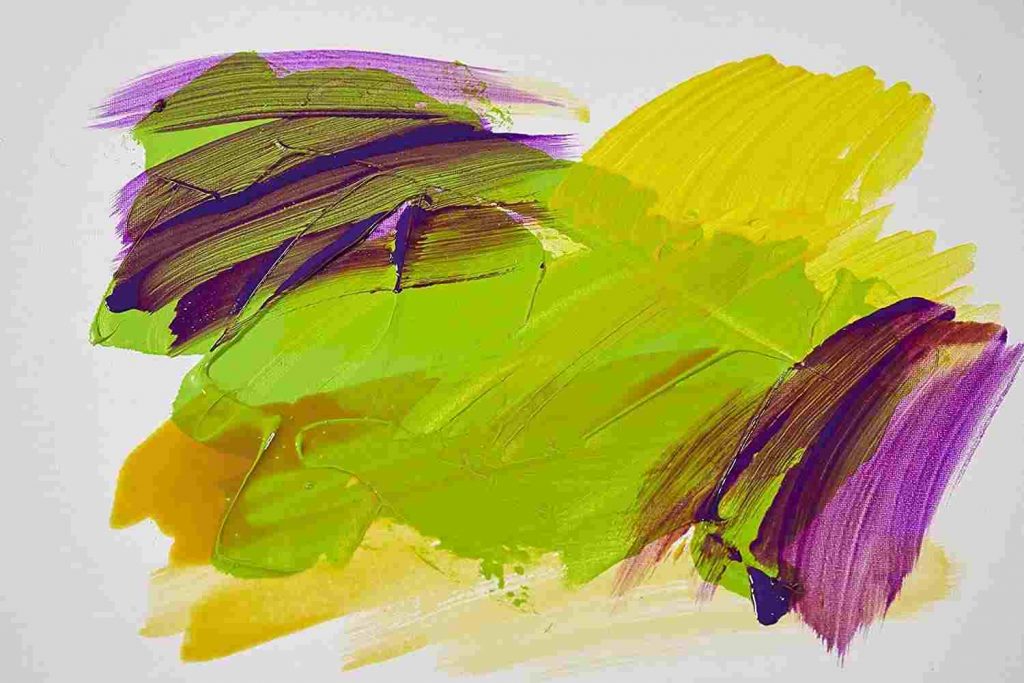Last Updated on November 19, 2023 by Masha Eretnova
There is no doubt that acrylic paint is water-based and water-resistant. It has versatility that lies in color layering. But how to make acrylic paint transparent? Would you buy another set of paint that has a transparent label on it? Would you put the water? Or would you add another mixture to it?
You can make acrylic paint transparent by applying thin layers, adding 50-60% water; or adding 40% of glazing, pouring, iridescent, or acrylic mediums and gels. Liquitex Glazing Fluid works great to make acrylic paint transparent.
Later on, you will learn the other mediums, these proven ways to make your acrylic paint transparent, and the mediums suitable for glass, plastic, and canvas.
Table of Contents
How to make acrylic paint transparent
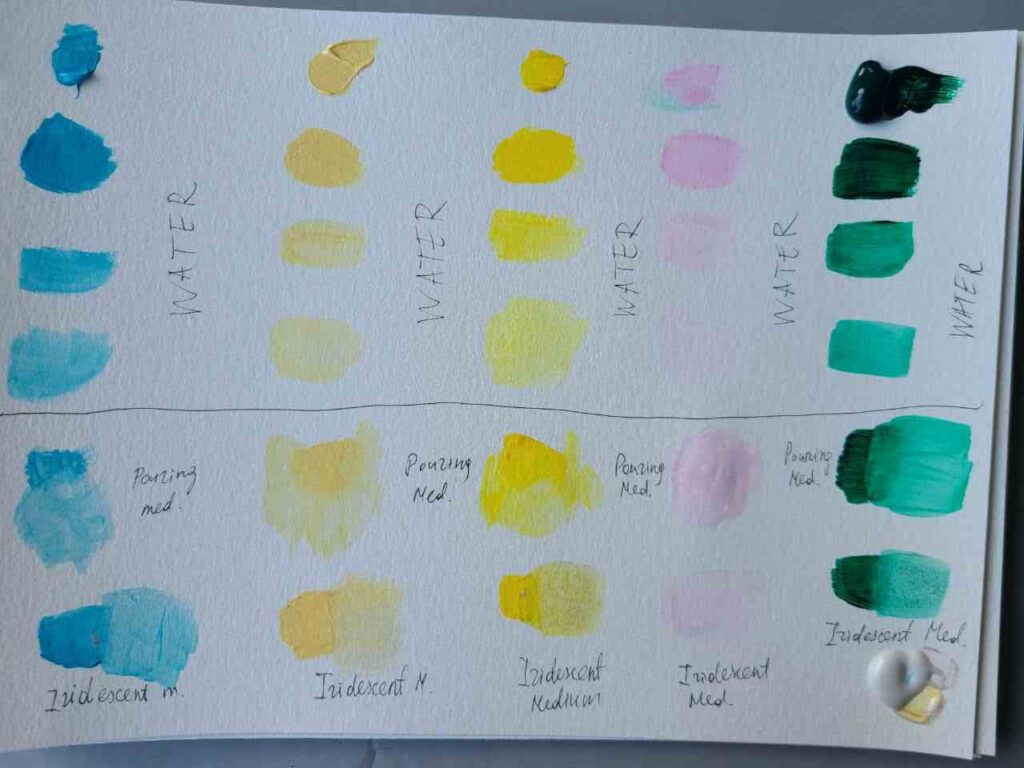
First and foremost, different mediums and techniques could be added to your acrylic paint, depending on the outcome you want. E.i, mix about 15% matte acrylic medium and 5% of water into your acrylic paint to achieve a matte yet transparent result.
The acrylic medium is for making the paint more liquid, while the water is used to reduce acrylic paint figment before it goes on in parallel, linear strokes with a large, flat-tipped brush.
The methods upfront:
- Thin layers of paint
- Adding water
- Using Matte medium
- Iridescent mediums (final color will shimmer!)
- Matte or gloss varnish
- Using Liquitex glazing medium
- Golden Retarder
- Airbrush medium
- Pouring mediums (like Floetrol)
- Gel mediums
- Gloss mediums
- Choosing transparent pigments
- Using cheap paints with low pigment
1) Apply thin layers
A thick layer of any paint will always be opaque, and one very thin layer applied with a wet brush will be more transparent than even the swatch on the tube. Painting in very thin layers with a wet brush is the easiest way to make your acrylic paint look transparent.
The more layers you add, and the thicker they are, the more opaque the finish will be.
Read more tips: 51 Simple Acrylic Painting Tips for Beginners & Pros
2) Use transparent Matte Acrylic Medium
The moment you mix your acrylic paint medium with your acrylic paint, the flawless transparent final look it gives will make you realize that you made a great choice. Compared to using only water, your art will feel and dries faster than you expected.
You only need a small squeeze of about 15 to 35% from your matter acrylic medium to get that glossy yet matte finish. The regular ratio matte medium to acrylic paint should be 1 to 5.
In the same way, you can use matte or gloss varnish. Plus, the varnish will also protect your painting at the same time against time and UV.
3) Add airbrush medium instead of water
Too much water can break the paint bond between pigment and acrylic binder and ruin the paint. Some painters use airbrush mediums instead of water to make it transparent. And it makes sense as the airbrush medium was specifically created to make the paint thinner and more fluid.
It may seem a little bit milky while wet, but it will dry to a clear finish. The beauty of using an airbrush or other flow improver as it allows you to double the volume of paint you have.
Airbrush medium is mostly used for miniature paints but it will work with regular acrylic paint.
Read also: The Best Airbrush for Miniatures: TOP-10
4) Use Golden Acrylic Retarder
This Golden Acrylic Retarder medium will make your acrylic paint become slow-drying like oil paint. It allows you to blend colors on the support and have smooth blending effects while making it transparent at the same time.
You can include it as an additive to your paints, and use a 1:1 ratio for thin applications and a 1:8 ratio for thicker applications.
But if you have Acrylic Thinner in your materials, this will also be a better alternative to make your acrylic paint transparent.
Read also: 15 Proven Ways How to Make Acrylic Paint Dry Slower & Homemade Acrylic Paint Retarder Recipe
5) Use Gloss Acrylic Medium for a lighter and glossy finish
At first glance, you would notice that gloss acrylic medium is the same as a matte medium. Well, yes, it kinda is because they have the same transparent look. But, if you look closely, you would see that the gloss acrylic has a more transparent outcome because it ought to be glossy—shiny, and has in-depth acrylic colors.
For example:
— If you use gloss acrylic medium, you will get a plain light, and transparent look by adding 40% of its product into your acrylic paint. There’s no need to add water ‐ it’ll produce just pure transparency.
But gloss acrylic medium can do more than that.
The acrylic color of the paint is more visible and can protect your piece as varnish. So, if you are looking for a medium that has color consistency and is thin, gloss acrylic medium is your best friend.
Same as without medium, the thinner the layer, the more transparent it will be.
You can alternatively use Floetrol, or Mod Podge and some crafters even use glue (which I don’t recommend doing).
6) Use Acrylic Gel Medium
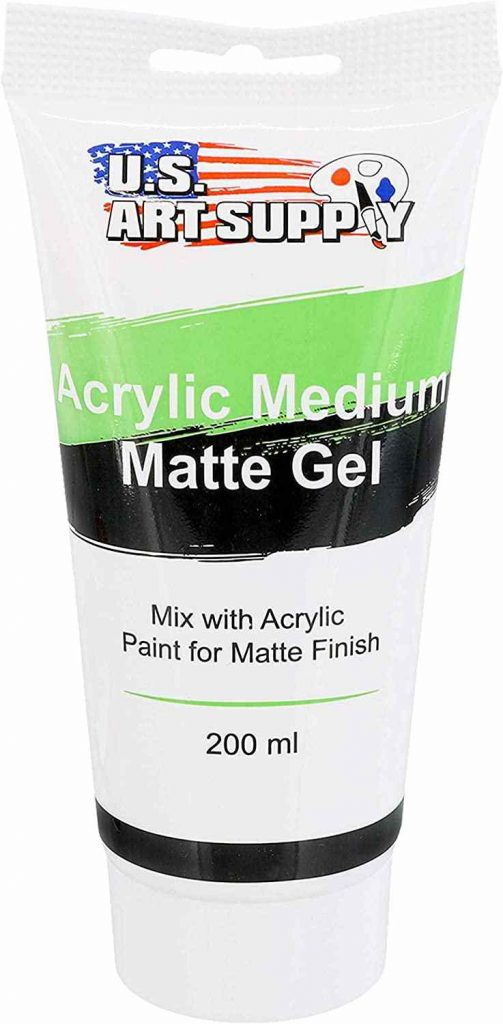
Meanwhile, if you are into color layering medium-friendly, translucent acrylic gel medium is for you. It has the thickest texture and minimal color paint that is suitable for mixing colors to build up your desired art.
It may be the same as using water, but with this medium, the paint keeps its quality and composition but the pigment is more transparent. They are normally also available in matte or glossy so you can choose.
Important tips: If you have trouble finding the medium that is suitable for the design that you are looking for, try finding acrylic paints that already have a transparent pigment in them. You will automatically see the watery texture of the paint. So if you do, make sure to shake it first before using it. And try to use it on scratch paper first.
7) Use transparent colors for easy transparency
Another option for achieving transparent acrylic paint is to use transparent colors. Transparent materials allow nearly all of the light that strikes them to pass through unimpeded, just like colors.
For example, a glass texture is transparent to all light colors. While if the light is green, all objects that pass through that color become united, as well as black and white.
So, the other hack to fully attain a transparent acrylic paint is by buying transparent colors such as Indian yellow, Gamboge, and permanent gold or any color that is similar to the background you are using.
You may also see the full list of transparent colors here. Big brands normally mark the labels or post a list of transparent and opaque colors on their website. Even for paint pens, it will be almost the same.
- Transparent Brown Iron Oxide
- Transparent Red Iron Oxide
- Transparent Yellow Iron Oxide
- Phthalo Green (Blue Shade)
- Phthalo Green (Yellow Shade)
- Phthalo Blue (Green Shade)
- Phthalo Blue (Red Shade)
- Nickel Azo Yellow
- Benzimidazolone Yellow Light
- Dioxazine Purple
- Quinacridone Magenta
- Quinacridone Violet
- Quinacridone Red
- Ultramarine Violet
- Permanent Rose,
- Permanent Crimson,
- Alizarin crimson,
- Dioxazine blue,
- Ultramarine,
- Prussian blue,
- Viridian Green,
- Terre Verte,
- Sap Green,
- Burnt Sienna,
- Raw Sienna and
- Raw Umber.
8) Use 50% of water for transparency enhancement
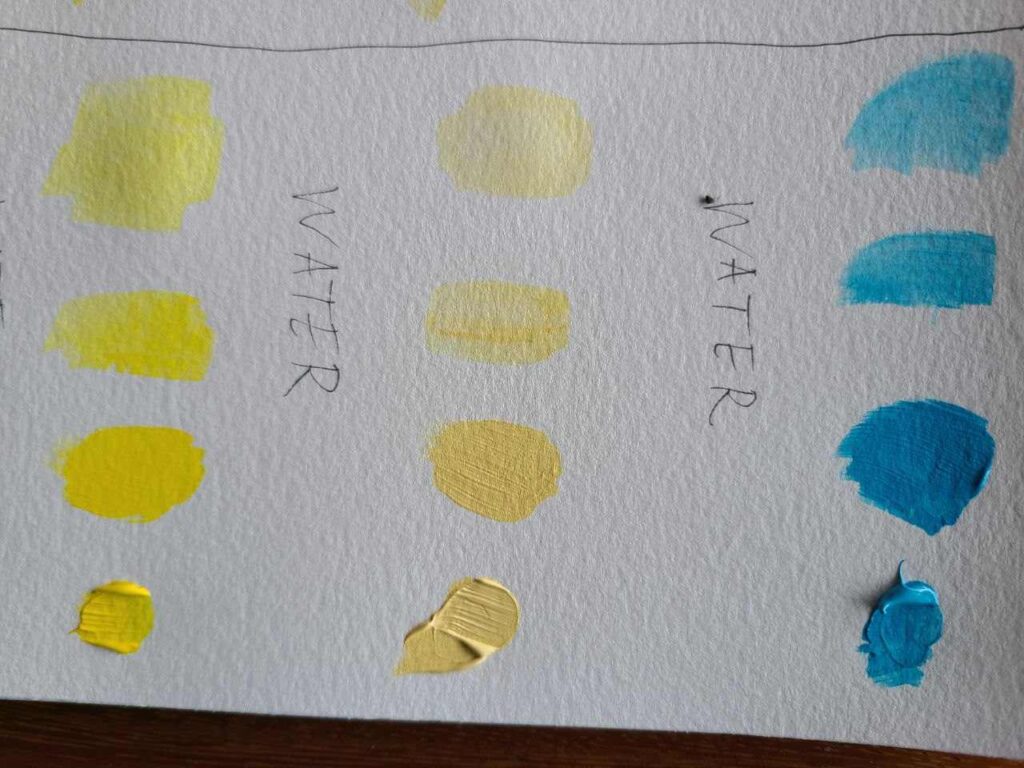
A natural way always works regardless of how great invented material may come, like using water for paint transparency. It is the easiest and more efficient method of all. I bet you also used it before you read this now.
However, you just have to be mindful of putting water from your paint into your canvas. Try maintaining it by at least 30% because otherwise, it will be still opaque. For a true translucent look add up to 50% water.
Plus, it has a high chance of not making your art stay longer and may change the surface of your canvas before you get the texture that you desire.
9) Use cheap acrylic paint
Craft paints are cheaper and lower in quality mainly because they have less pigment. If you need your paint to be more transparent – you need less pigment, that’s why we add mediums or water to break it down.
So a thin layer of cheap paint with a wet brush will most likely give you a more transparent finish.
Read: Best Acrylic Paint: 20+ Brands Reviewed for Beginners [From Cheap to Pro]
10) Use a Pouring Medium to make acrylic paint transparent

Pouring mediums’ main function is to increase the flow of acrylics, making them more fluid and creamy. But if used like water, or even directly on paint applied on paper or canvas, you can mix it and make the paint look more translucent.
I’ve tried Mont Marte pouring medium, it is a quite cheap option, and as far as I know, it is a glue-based medium. You can try any other pouring medium you have.
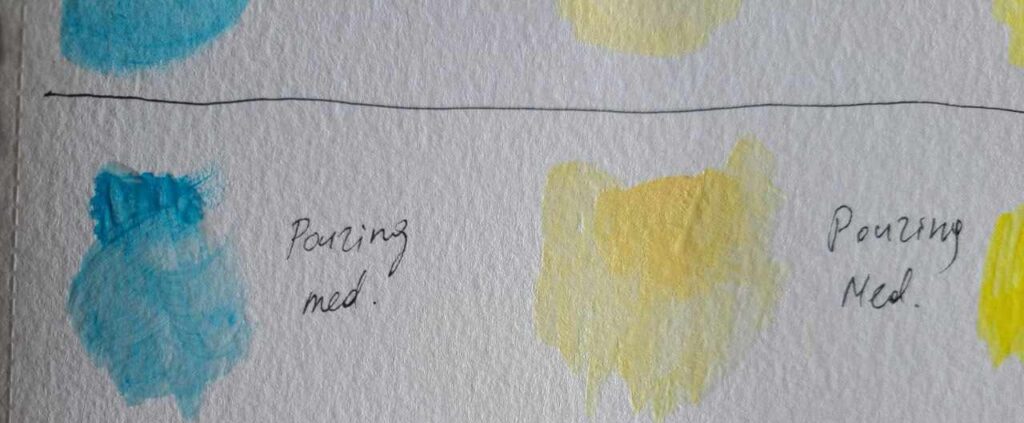
11) You can make acrylic paint transparent with Iridescent medium
Iridescent medium is whitish medium with shimmer, primarily I’m using it to turn grey into silver color or make a pearl look. But if you don’t mind transparency and a little shimmer in your painting, you can use an iridescent medium to make acrylic paint more translucent.
I’m using Liquitex Iridescent medium. When it is wet it doesn’t seem like shimmering at all, but let it dry, and you will see the silverfish glow:
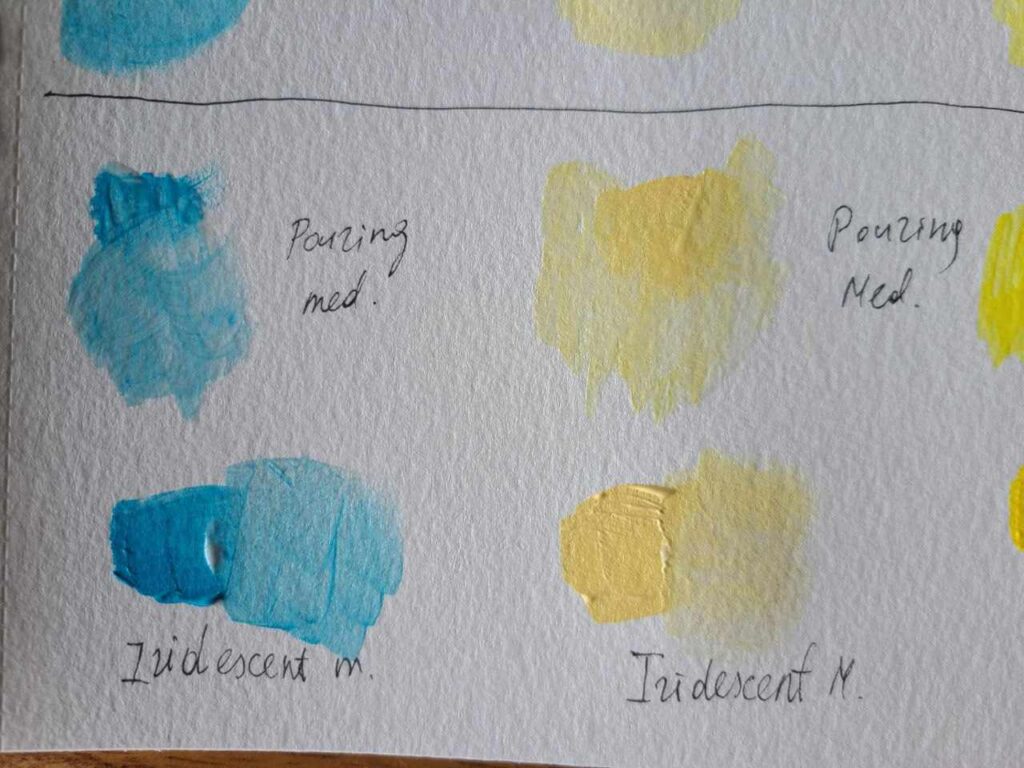
And this is from a different angle of dry paint. I think it is beautiful!
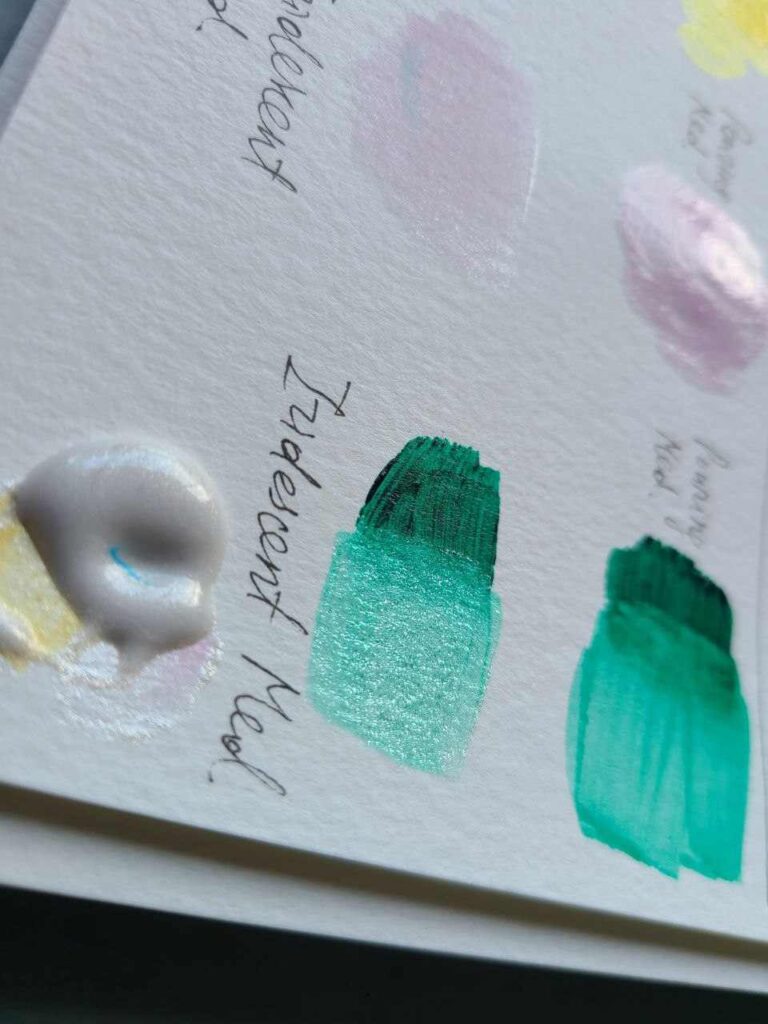
How to make acrylic paint transparent for glass
10) Liquitex glazing fluid
One of the best mediums to make acrylic paint transparent is Liquitex glazing fluid. It has the same versatility as acrylic paint, making it appropriate for glass. Its water-based texture offers a beautiful result, with self-leveling layers free of brushstrokes and transparent color layers. Plus, you only need a small about in using it!
Aside from that, compared to all mediums for transparent outcomes, it dries quickest more than anything else. Therefore, if you want to use it for glass, rest assured that your paint will hug its surface efficiently.
It works on canvas and other surfaces, and pretty much ANY pigments!
Read also: Can You Use Acrylic Paint on Glass? 9 Best Sticky Acrylic Paints for Glass!
How to make acrylic paint transparent for plastic
Golden acrylic glazing liquid
To be honest, it is quite hard to use acrylic paint for plastic. Yes, those paints are perfect for wood, glass, or anything, but not for plastic. You have to ensure that you are using the right paint for this. Because of not, the paint will just peel off.
Cheap paints and some markers like Posca will not cover well plastic and will look transparent and thin.
But if your paint sticks well to plastic, and you want to make it transparent, luckily, Golden acrylic glazing liquid was invented. You can use any ratio of paint to this glazing medium.
It makes acrylic paint transparent from plastic but with two coats of primer and light sanding. Always include primer. It will serve as the foundation of your paint. And, bring your long patience while doing it.
Meanwhile, Golden’s medium will maintain a wet edge for easier softening. It will dry to a satin finish and protected coat, which is ideal for plastic.
How to make acrylic paint transparent on canvas
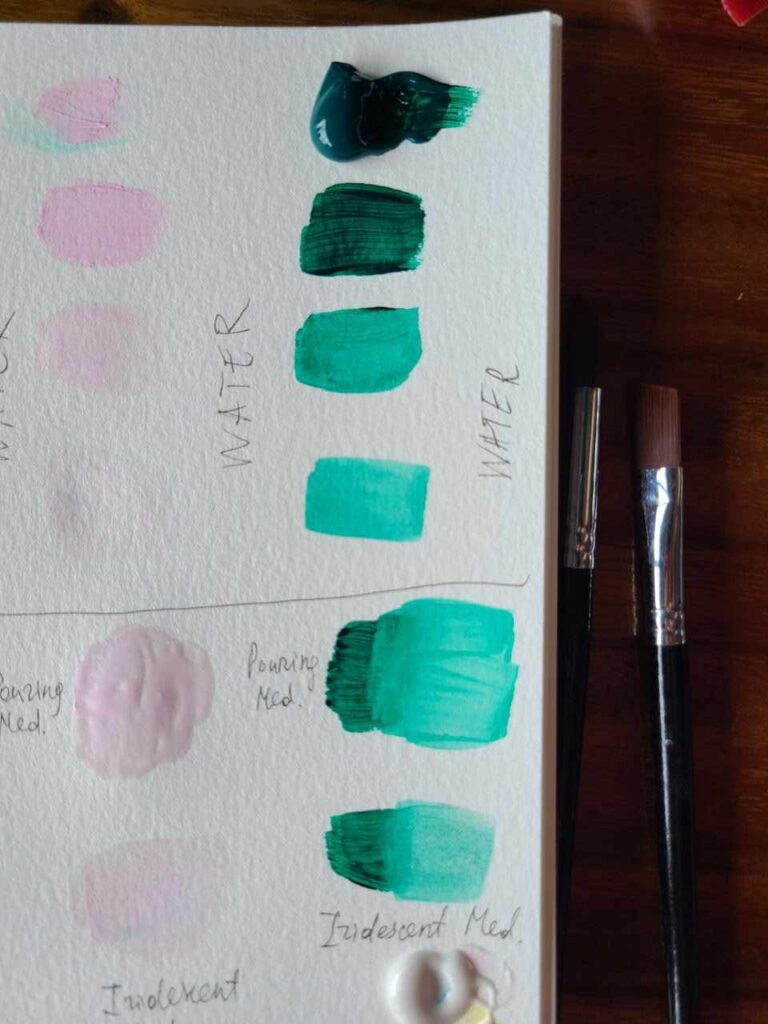
All the methods above will work for canvases, from basic adding water to using mediums. Liquitex glazing fluid will work amazingly as well.
Winsor & Newton Professional Acrylic Glaze
Winsor and Newton Acrylic Glaze’s main strength lies in reducing the paint opacity while staying vibrant at the same time. The consistency of this medium is a phenomenon.
Important Note: In making your acrylic paint transparent using mediums, you must add at least 40% of your medium over your 15% acrylic paint. However, this is not the only required amount of mediums. It still depends on how big your project is. Just always remember that you can use any ratio.
Related: How to Paint with Acrylics on Canvas: 3 Easy Steps [Supplies included]
Avoid buying “transparent” paints
Some brands sell acrylic paint with the label transparent like these Golden transparent paints. It simply means they put much less pigment in there (so basically did the same you would do by adding water) but you are paying almost the same price!
So don’t waste money on it, buy regular paint and use any of the methods above, either free ones or using a professional medium.
How to paint something to look transparent?
Now that we’re done sharing the tips on how to make your paint look transparent, we will proceed with painting techniques to make it look transparent. You can now set aside your mediums, primer, and glazing materials because this will be all about stroking and using one painting alone with nothing to mix.
- Making your paint look transparent or watercolor-like
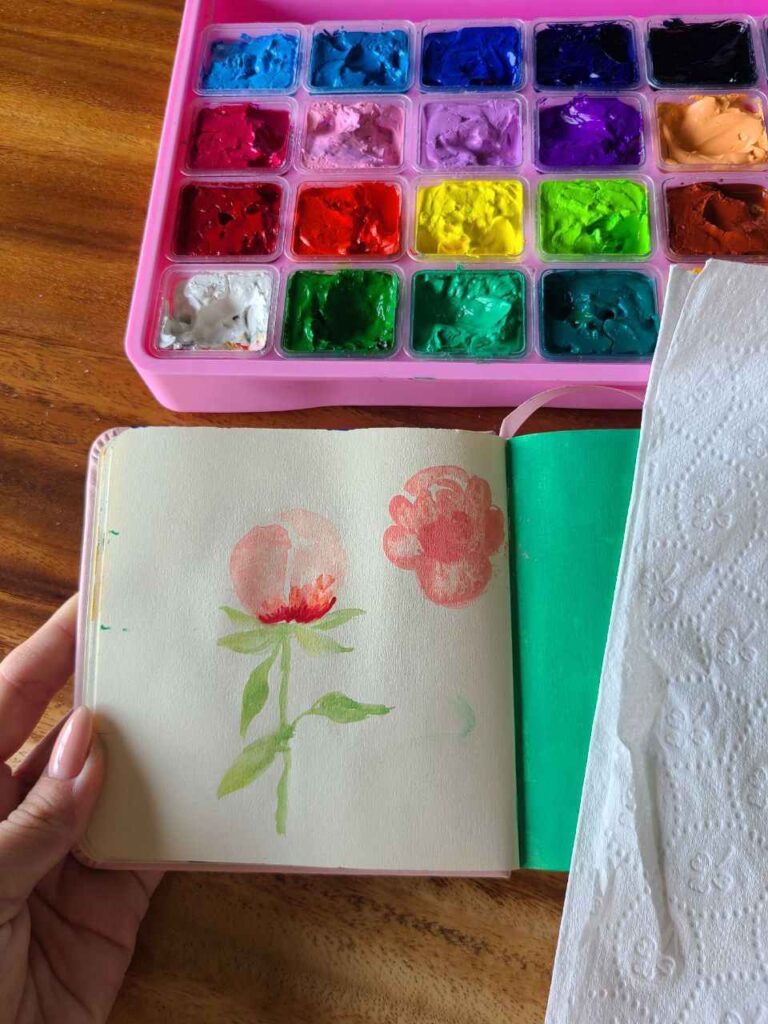
First, to make your paint look transparent, you have to prepare your watercolor paper, your paints, and water to change the shades of the paint.
Once done, you should try applying the lightest washes in a lightweight manner so that it won’t look too thick. Add up to 50% water to your acrylic paint to make it look like transparent watercolor.
The darkest part, or the one with a little water in the paint, will serve as shadows of the color. In this way, it will focus on making art details more colorful with shares and volume.
On the paper above, I used gouache with water to make a peony look transparent and gentle.
- Purchase paint with translucent pigments
You can also get a transparent look finished by buying transparent pigments alone. Different pigments have different textures of transparency. Therefore, you have to always read the label of the paint that you are buying.
Moreover, if you see the word ‘hue’ on the label, try to find another painting because the mixture of its pigments is different from what we are looking for.
- Learn gradient blending using a brush
If you are a beginner and just learning to make your paint look transparent, you should first be familiar with how to control your brush, mainly gradient blending.
A gradient blend is created by blending two or more colors together to create an outwards or inwards gradient effect. Your artwork will appear three-dimensional transparent once you add a gradient to it.
This method is best in making transparent clouds, glass, etc., there is always a smooth transition from one color to the next, and the color tones must vary in every stroke to create an overall color difference.
Tips: You can use any brush to practice making a gradient blending. But, since this stroke is most commonly used for painting large patches, such as skies and greens, a flat fan brush would be a good choice.
Tips: 27 Tips How to Paint Without Brush Strokes or Marks
- Transparent objects have colors
The most basic example is painting raindrops. The borders will be black, the upper part grey and the lower part will have white in it. But depending on the light (maybe you are painting sunset drops kissed by sun), you can also change colors, and use tone (color+grey) and tint (color+white) to make your transparent drops look more realistic.
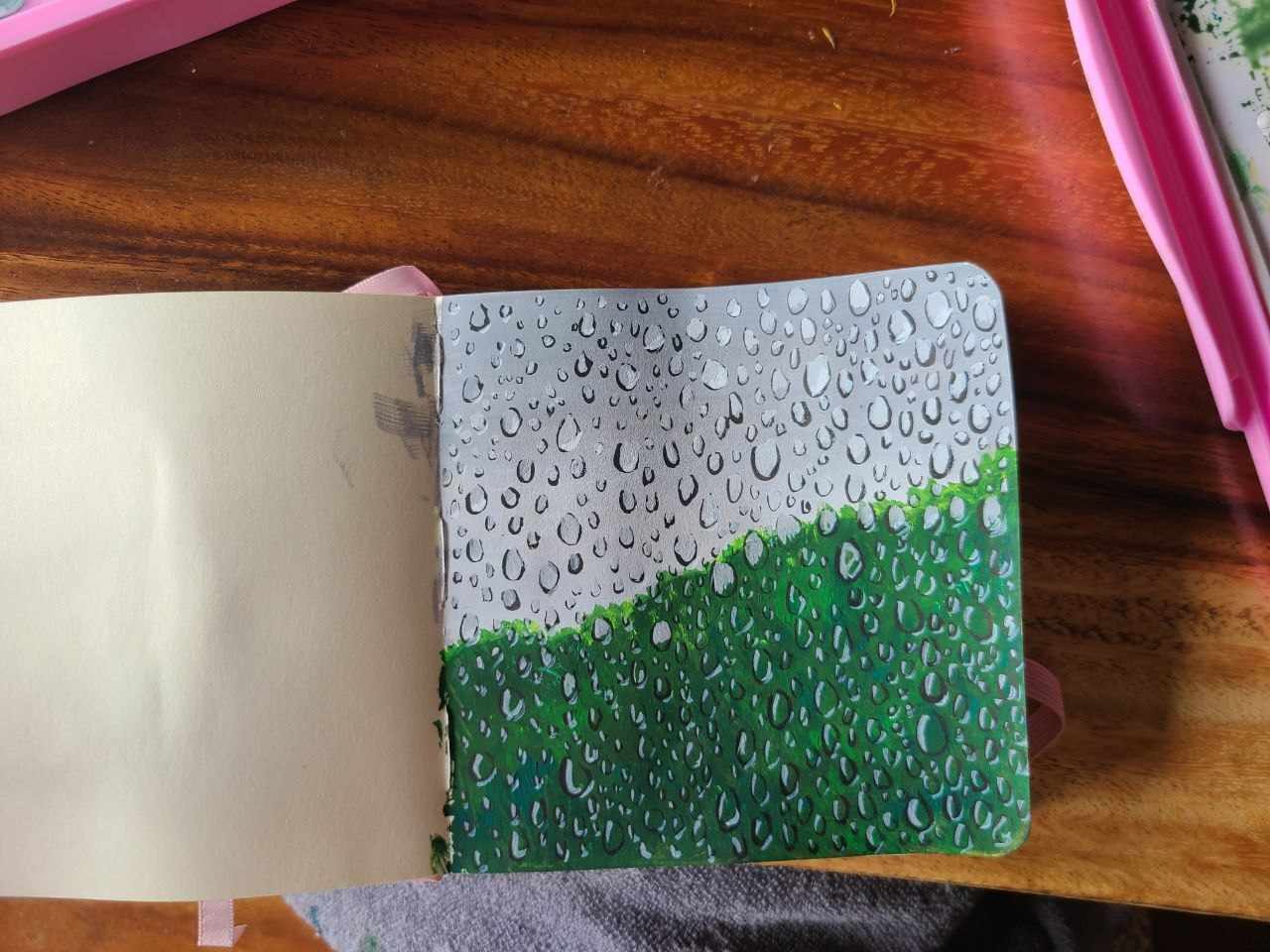
Let’s take bubbles as an example. They do have colors, just light touches of them. Use watered-down paint and washes of paint, for ex light blue, and yellow to create the bubble itself and the side that reflects the light. By adding color we create depth and a 3D illusion of volume.
Always add white to make an accent. It works for bubbles, eyes, and water.
How to make acrylic paint less transparent or not transparent?
An acrylic paint that is less transparent or not transparent is called opaque – a solid color that can hide what’s under the surface. Normally, there are specific colors that describe opaque such as
So, making acrylic paint less transparent or not transparent is by mixing solid colors, color layering, using gesso, and another special medium.
In fact, you can make acrylic opaque in seven easy steps, as well as which eight brands and colors are more opaque: 7 Ways How to Make Acrylics More Opaque & Full Opaque Colors List.
Why is my acrylic paint transparent?
Your acrylic paint is transparent because it has more fillers than pigments, it is ideal for transparency, and its texture hides its opacity. But, sometimes, it depends on the brand you use.
- Your paint has too much water in it: more fillers less figment
Each paint is balanced between the right about of fillers and pigments. Fillers will serve as a material to enhance the natural color of your paint. Plus, it consists of the highest level of whiteness.
In comparison, pigments are materials that have color, tint, opacity, and gloss control. Its only purpose is to provide a solid color.
Therefore, if your paint has more fillers than pigments, you will see an overloaded of water and oil as you open it.
In the case of acrylic pouring your paint will break and look transparent showing the canvas if you added too much water or medium so the paint became too thin to cover the canvas.
- Your paint becomes too thin
There were instances when you overly applied a thin medium to your paint will cause it to split. There will be a messy application and insufficient coverage in return.
As a result, if you do not put the right amount of medium in your acrylic paint, it will destroy the paint, resulting in mud cracks and clumpy looks, which will diminish its transparency.
- Your paint has gone bad
The other reason your paint becomes less transparent is that it simply goes bad and loses its pigmentation.
4. Storing paint
The supreme paint company in the UK called it “hiding strength.” It’s where the pigment, medium, and thickness of the paint affect the opacity based on the dispersion and location of the pigment.
In other words, the location of where you store your acrylic paint and how long you put it there could affect the pigmentation of your paint. It could build up too many oils in it and ruin your paint.
Tips: You should store your acrylic paint in a container and in place at a temperature of around 65° – 75°F for better paint consistency.
FAQ
Can black acrylic paint be transparent?
Yes, black can be transparent by adding water. But best if you use a glazing medium from Winsor & Newton or Liquitex or an acrylic gel. Its specialty is to reduce the vibrant pigmentation of strong colors like black.
You’ll get a smooth consistency and high gloss finish with just a single drop. Also, it’s easier to blend and build layers without losing transparency.
How to make white paint transparent?
White is indeed opaque color. But, just like the color black, you can also make your white paint transparent by mixing mediums and gazing paint. You have to make sure that it only has a small amount of
Another choice to make your white paint transparent is to buy transparent mixing white. In this way, you will never need to buy other mediums or to do‐it‐yourself.
If you successfully have a white transparent, it’s time savers for you to instantly make another color transparent. But white is a simple yet very versatile type of pigment. It can reflect any color in a snap.
Is Liquitex acrylic paint transparent?
No, most of the Liquitex acrylic paint is more opaque than transparent. However, that doesn’t mean you can’t find transparent Liquitex acrylic paint. Because based on my experience, it depends on the brand and the color that you are using.
Moreover, if you ever be in a position to only has Liquitex acrylic paint for transparency, it’s still best to prepare water behind and another glazing medium.
Wrap Up
Having acrylic paints could be versatile and beneficial in many possible ways. Every artist, including me, wishes to apply a beautiful glaze formed in the presence of stroking and layers of paint that can only attain by knowing how to make acrylic paint transparent.
Sometimes you can achieve it by simply buying acrylic paints; some colors need water enhancement; others may need mediums. However, acrylic paints can dry darker than usual. Hence, don’t be afraid to mix and add until you get the transparency that you need.

Masha Eretnova, born in 1991, is a Buenos Aires-based certified teacher, artist, and member of the Professional Artist Association with 20+ years of personal painting journey.
She started painting and drawing very early and is now an international abstract artist and educator passionate about acrylic painting, gouache, and crafts.
Her works are part of international exhibitions and contests, including ArtlyMix (Brazil), Al-Tiba 9 (Spain), Exhibizone (Canada), Italy, and many more.
Besides her artistic pursuits, Masha holds a post-grad diploma in Teaching Film Photography and 2 music school diplomas: piano and opera singing.
